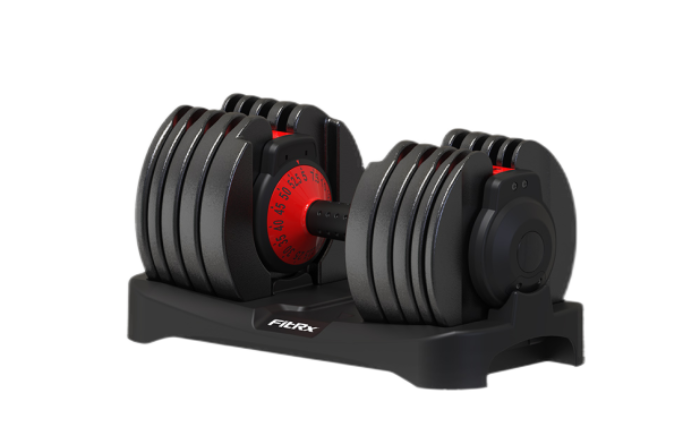How to Begin Training with Dumbbells
- Jordan Fargo - Author
- Weights
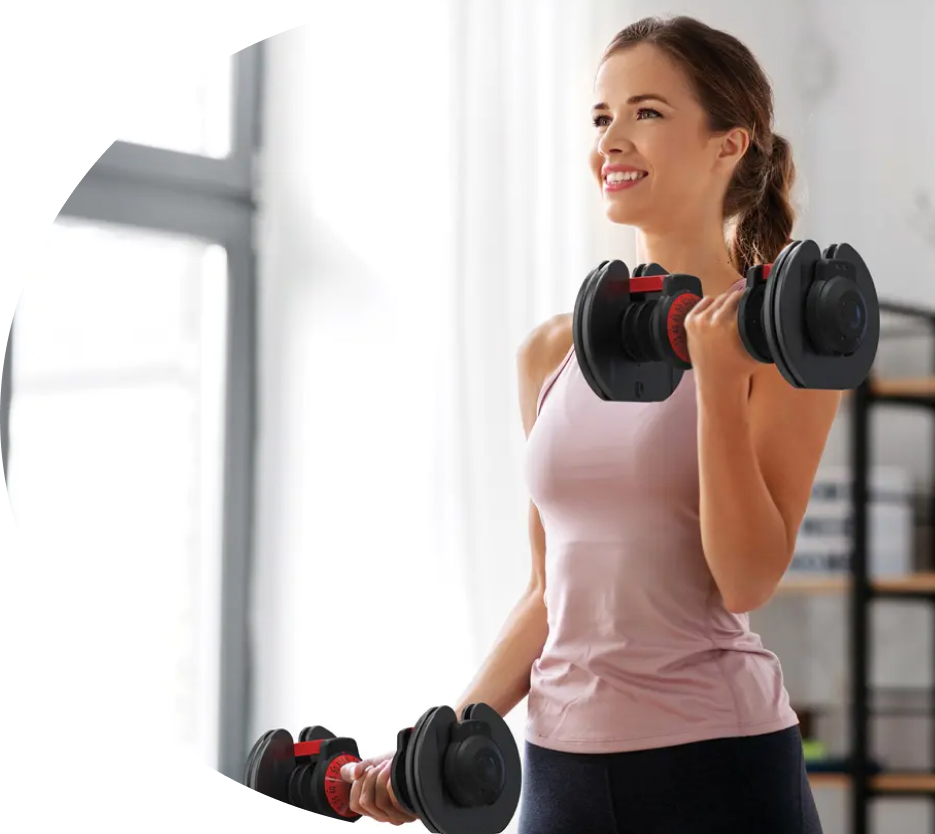
How can I begin dumbbell training?
Before starting any dumbbell training routine, make sure to stretch and hydrate properly. Only use a weight that you know you can use safely and properly to avoid injury.
Clear the surrounding area of any objects so that you don’t fall or accidentally hit them. Beginners should start with a light weight until they improve their form and increase their strength.
They should also try to do 2-3 exercises for each muscle group and see which ones feel the best, then slowly branch out to newer, more difficult movements. See our section on sample workouts if you’re not sure where to start.
If at any point during your training, you feel weak or nauseous, stop immediately and consult with your doctor to modify your workout routine. Going slowly and carefully, with patience and proper technique, is the best way to begin working out to ensure safe and satisfying results.
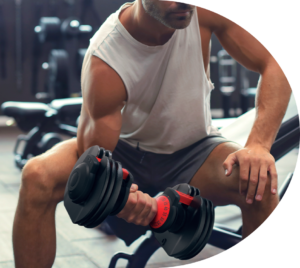
What are some of the best exercises to do with dumbbells?
For your biceps, some of the best movements include sitting dumbbell curls, preacher curls, Zuzu curls, and curls with lunges to target your legs as well. You can do close-grip push-ups, dumbbell kickbacks, and skull crushers for a triceps workout, and dumbbell lateral raises, upright rows, and front raises for your shoulders.
To engage your core muscles, you could choose from Russian twists, V-ups, and renegade rows, and for your legs, you can try lunges, split squats, and two-armed stiff-leg deadlifts. If you want to really work your chest, do bench presses, dumbbell flies, and incline presses. If you’re looking to strengthen your back, some of the best options include bent-over rows, bench rows, push-up rows, and pullovers.
You can check out our SmartBell Total Body exercise video and we’ll walk you through how to do many of these great exercises in extensive detail.

What are some of the best exercises to do with dumbbells?
For your biceps, some of the best movements include sitting dumbbell curls, preacher curls, Zuzu curls, and curls with lunges to target your legs as well. You can do close-grip push-ups, dumbbell kickbacks, and skull crushers for a triceps workout, and dumbbell lateral raises, upright rows, and front raises for your shoulders.
To engage your core muscles, you could choose from Russian twists, V-ups, and renegade rows, and for your legs, you can try lunges, split squats, and two-armed stiff-leg deadlifts. If you want to really work your chest, do bench presses, dumbbell flies, and incline presses. If you’re looking to strengthen your back, some of the best options include bent-over rows, bench rows, push-up rows, and pullovers.
You can check out our SmartBell Total Body exercise video and we’ll walk you through how to do many of these great exercises in extensive detail.
Quick-Select Adjustable Dumbbell, 5-52.5 lbs.
Maximize your strength training with minimal equipment using the FitRx SmartBell! This adjustable dumbbell lets you customize the SmartBell’s weight in increments ranging from 5 to 52.5 pounds.
What are some sample dumbbell workouts?
You can easily squeeze in some quick and challenging workouts right at home, any time of day.
Below are a few sample workouts for working your arms, chest, and back, and your legs and core. Always remember to stretch before you start to prevent cramps. Drink plenty of water before, during, and after your workout to prevent injury, dehydration, dizziness, and/or nausea.
Rest for 1-2 minutes in between each set. You can limit yourself to only 45 seconds to challenge yourself and focus on a faster-paced, fat-burning approach.
ARMS – 3 sets (8-12 reps each) of:
- Sitting Dumbbell Curls
- Preacher Curls
- Close-Grip Push-Ups
- Dumbbell Kickbacks
- Dumbbell Lateral Raises
- Upright Rows
CHEST/BACK – 3 sets (8-12 reps each) of:
- Bench Presses
- Dumbbell Flies
- Incline Presses
- Bench Rows
- Push-Up Rows
- Dumbbell Pullovers
LEGS/CORE – 3 sets (8-12 reps each) of:
- Lunges
- Split Squats
- Two-Armed Stiff-Leg Deadlifts
- Russian Twists
- V-Ups
- Renegade Rows
Related Posts
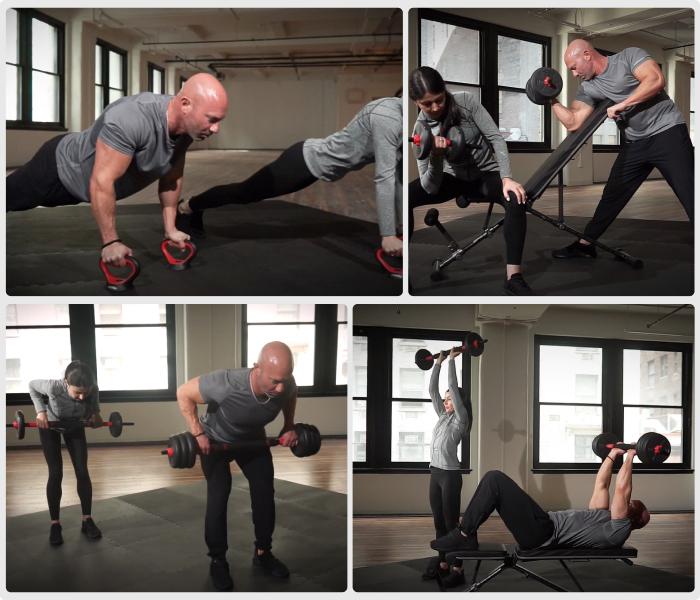
This Rise of the Home Gym
The Rise of the Home Gym There’s no doubt that the COVID pandemic and lockdowns changed how we think about fitness and home training. As
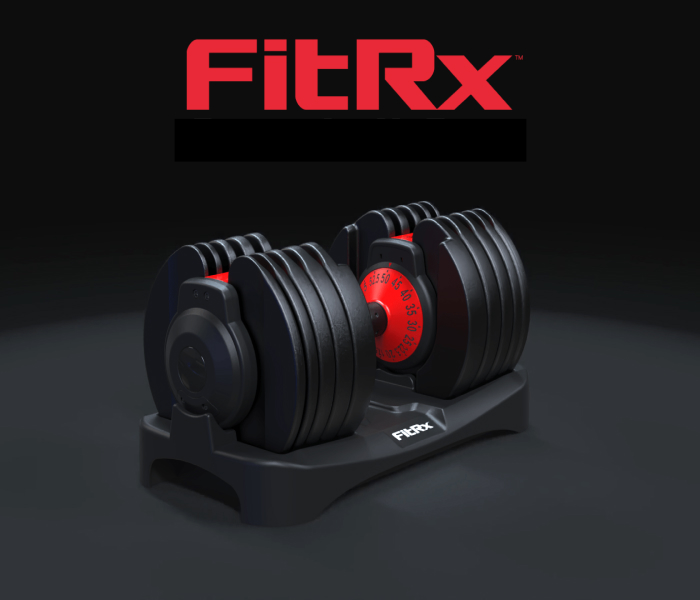
Going Beast Mode with the FitRx SmartBell
Going Beast Mode with the FitRx SmartBell There’s no doubt that the pandemic fundamentally changed how people work out. As everything shut down at the
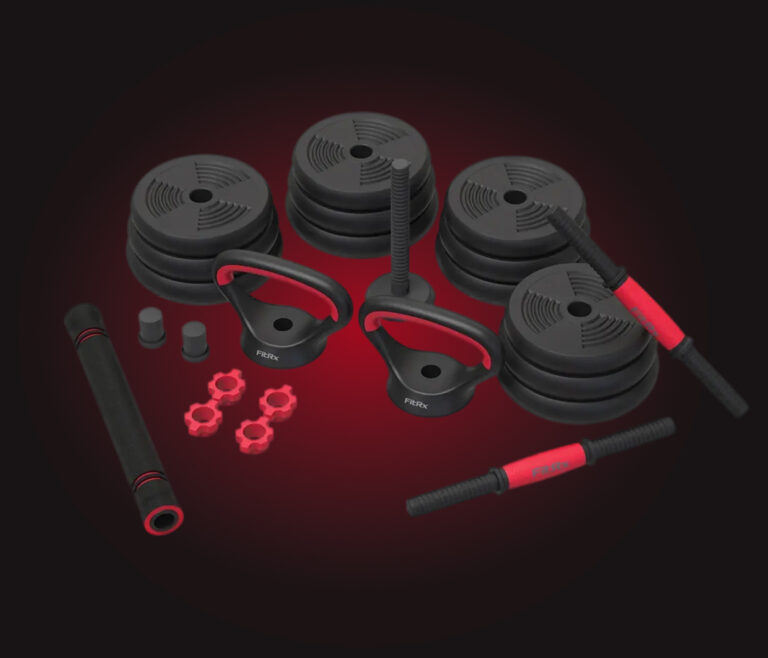
FitRx SmartBell Total Body Gym – Biceps & Triceps
FitRx SmartBell Total Body Gym – Biceps & Triceps Sitting Dumbbell Curls and Preacher Curls For sitting dumbbell curls in a seated position, rest your

